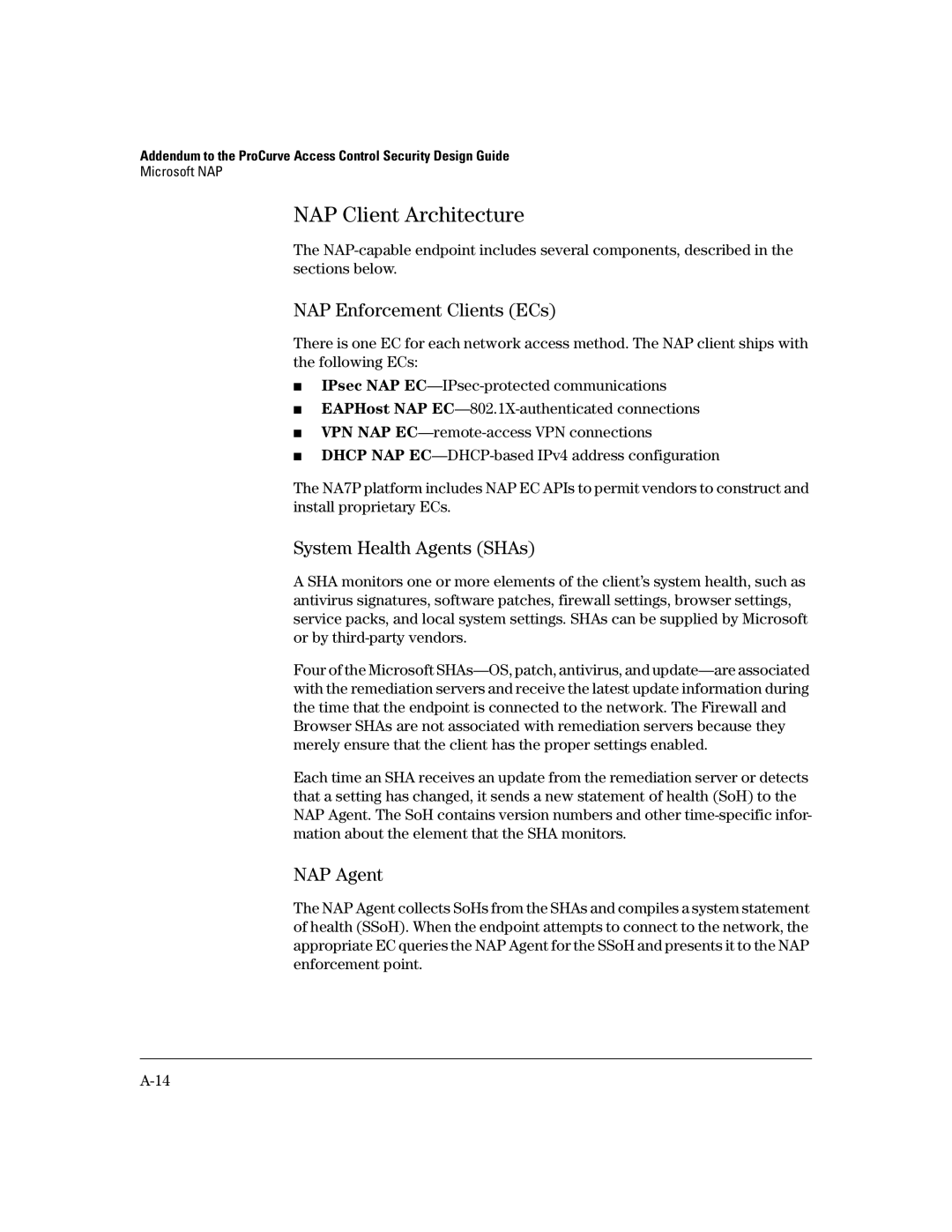Addendum to the ProCurve Access Control Security Design Guide
Microsoft NAP
NAP Client Architecture
The
NAP Enforcement Clients (ECs)
There is one EC for each network access method. The NAP client ships with the following ECs:
■IPsec NAP
■EAPHost NAP
■VPN NAP
■DHCP NAP
The NA7P platform includes NAP EC APIs to permit vendors to construct and install proprietary ECs.
System Health Agents (SHAs)
A SHA monitors one or more elements of the client’s system health, such as antivirus signatures, software patches, firewall settings, browser settings, service packs, and local system settings. SHAs can be supplied by Microsoft or by
Four of the Microsoft
Each time an SHA receives an update from the remediation server or detects that a setting has changed, it sends a new statement of health (SoH) to the NAP Agent. The SoH contains version numbers and other
NAP Agent
The NAP Agent collects SoHs from the SHAs and compiles a system statement of health (SSoH). When the endpoint attempts to connect to the network, the appropriate EC queries the NAP Agent for the SSoH and presents it to the NAP enforcement point.
